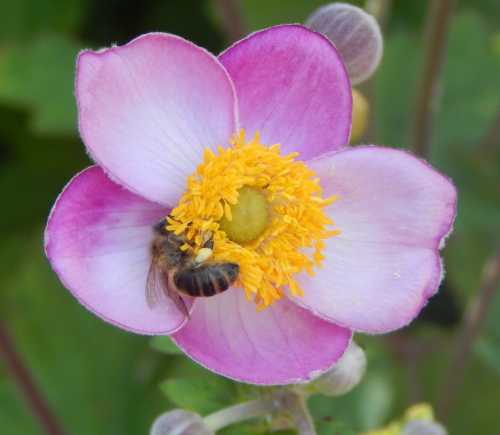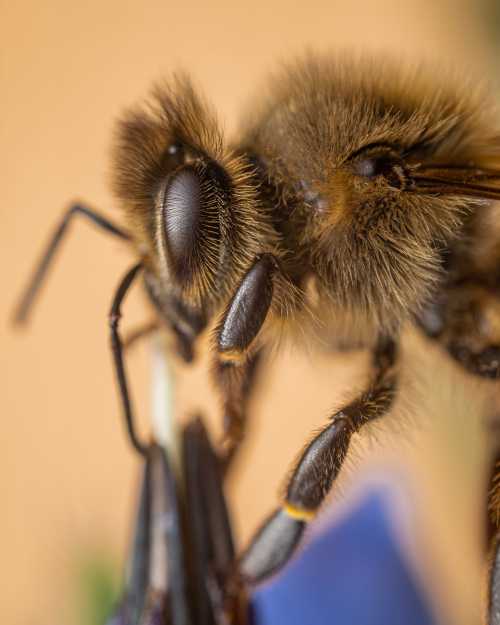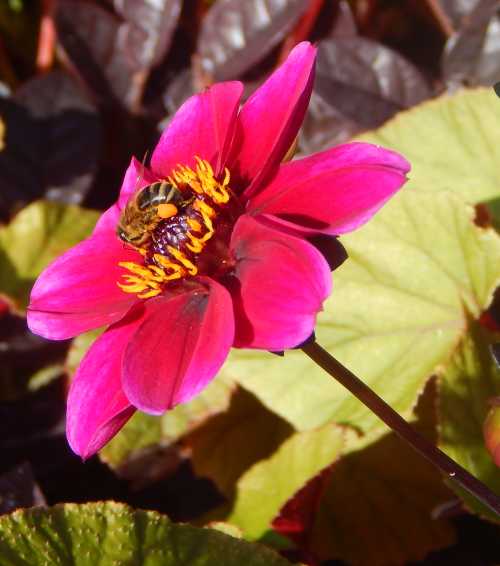If Honey Bees Can Detect Illness In Humans, Can They Smell Cancer?
Updated: 1st May 2021
It has been found that honey bees can be trained to detect certain illnesses through the sense of smell. But can bees smell cancer?
How honey bees detect / smell illness in humans
Using a simple ‘classic conditioning’ training program (like Pavlov’s dogs) it is possible to train honey bees to detect the biomarkers for tuberculosis, diabetes, lung cancer, pancreatic cancer and skin cancer.
- Honey bees (Apis mellifera) have a sense of smell that is more acute than that of dogs, enabling them to detect odors in very tiny concentrations of only several parts per trillion (although, unlike sniffer dogs, it appears that bees can only be trained to ‘detect’ one target odor).
- Honey bees can be trained to detect certain illnesses in humans, and in some cases, can even detect illness in advance of the tests that are currently used.
- They do this by smelling the illness on the breath. The human breathes air into a small box through a funnel.
The small box is inside a large box that has bees inside. If bees smell the illness, from the breath, they fly from the large box into the smaller box. - It takes ten minutes to train honey bees to detect human illness.
 Honey bee - Apis mellifera on Japanese anemone.
Honey bee - Apis mellifera on Japanese anemone.How are honey bees trained to smell illness, such as cancer?
Bees are trained using the classical conditioning method, in which they are exposed to a particular odor and then rewarded with a sugar solution so that they then associate the odor with food.
In a similar way, bees have already been trained to detect the scent from substances used in bombs.
But where does the odor come from, and what does it have to do with cancer?
Human's emit many ‘volatile organic compounds’ (VOCs) in the breath and bodily fluids, some of them from processes occurring within the body, whilst others originate from the environment.
VOCs from within the body can be affected by pathological (disease) processes, including cancer.
 Honey bees can be trained to detect odors associated with cancer on the human breath. Bees pick up scent with their antennae.
Honey bees can be trained to detect odors associated with cancer on the human breath. Bees pick up scent with their antennae.Photograph, with thanks to Isaias Sanchez
Biomarkers
associated with tuberculosis, lung cancer, skin cancer and diabetes, which can
all be detected through smell, are present on a patient's breath – to be
precise, in the subjects exhaled breath condensate.
A few VOCs have been shown to be accurate biomarkers for some diseases. It is these biomarkers that bees are trained
to detect. Honey bees can smell the odor through their sensitive antennae.
Designing with bees
A UK-based Portuguese designer, Susana Soares at the Royal College Of Art, designed
a glass chamber device for the purpose of using bees to detect illnesses. Actually it’s two chambers with one inside the
other. The outer chamber has bees flying around in it.
The patient breathes through a funnel which leads into the smaller inner chamber. If the bees detect the target odor (i.e. chemicals caused by the illness which are expressed on the breath), they fly into the smaller chamber, thus verifying the presence of the target odor.
Bees really are amazing! So much brilliance packed into a tiny creature!
 Honey bee - Apis mellifera on dahlia.
Honey bee - Apis mellifera on dahlia.Resources
- Stönner, C, Edtbauer, A, Williams, J. Real-world volatile organic compound emission rates from seated adults and children for use in indoor air studies. Indoor Air. 2018; 28: 164– 172. https://doi.org/10.1111/ina.12405
- The Smithsonian Mag - Can Bees Be Trained to Sniff Out Cancer?
More articles about bees
- The 4 Key Stages Of The Bee Life Cycle - For All Bee Species The Bee Life Cycle Explored: A look at the different life stages of honey bees, bumble bees and solitary bees.
- About Bee Nests About Bee Nests: Q&A, what to do if you find nests belonging to bumblebees, honey bees, carpenter bees.
- What Is A Bee? Is A Bee An Insect, Bug, Invertebrate, Animal, Mammal? What is a bee? Are bees insects and are they bugs or a type of fly? Are bees animals and if so, are they mammals? Are bees invertebrates? Answers here.
- Types of Bees: The different species, families and generas of bees Explained here: different types of bees: bumblebees, carpenter, mason, leaf cutter, honey bees and more.
- Natural Enemies Of Bees Natural Enemies Of Bees, from spiders to other insect parasites, and even hungry racoons!
If you found this page helpful or interesting, I'd really be grateful if you would share it with others - if not this page, perhaps another, such as Gardening For Bees.
Thank you so much :) .